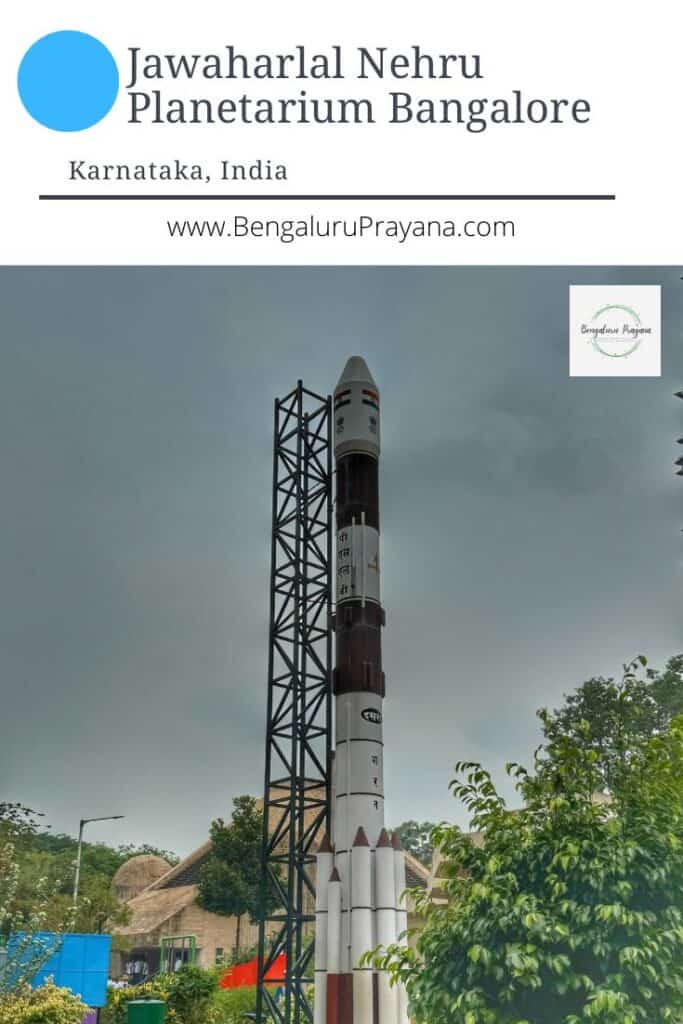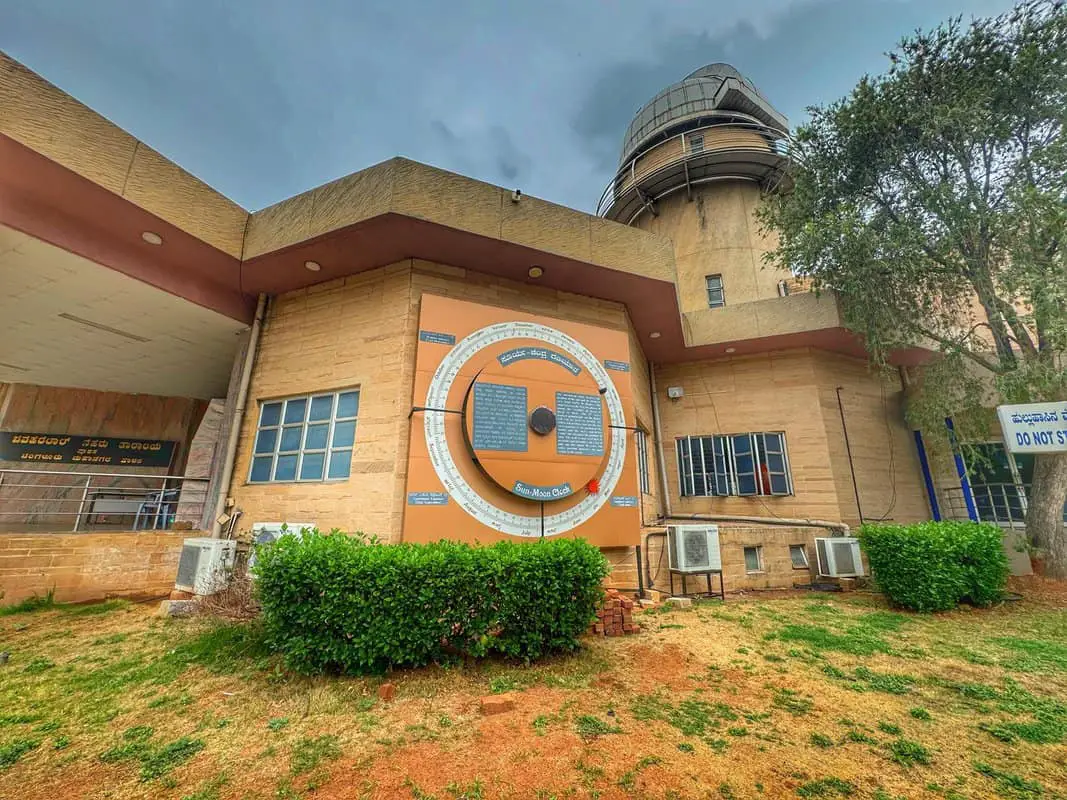Welcome to the Jawaharlal Nehru Planetarium. Located in the heart of Bangalore, this planetarium is a gateway to the wonders of the cosmos. It offers an educational and entertaining experience for visitors of all ages. From captivating sky theatre shows to interactive exhibits, the Jawaharlal Nehru Planetarium promotes the understanding of astronomy and space science.
Join me as I delve into the fascinating features and programs that make this planetarium a must-visit destination in Bangalore for anyone curious about the universe.
This article may contain affiliate links. For complete information, please see our affiliate disclaimer here.
Bengaluru Travel Resources
Don’t have the time to read the complete post? Here are some useful links for your bookings:
Cheap Flight Bookings? Use Skyscanner
Good stay and accommodation? Use Agoda or Stay22
Hostels? Use HostelWorld
Comprehensive Travel Insurance? Use SafetyWing
Tours and Activity Bookings? Use Viator, GetYourGuide or TripAdvisor
Useful Blog Posts
Things to Know Before Visiting Bangalore
Discover Kempegowda International Airport
Best Hotels in Bangalore for Family Holidays
Review of Taj Westend Bangalore (5-Star Hotel)
Review of Jayamahal Palace Hotel (4-Star Hotel)
Transport in Bangalore: Getting Around the City
One-Day Itinerary for Bangalore
2 Days in Bangalore
3 Days in Bangalore
5 Days in Bangalore
Best Area to Stay in Bangalore
About Jawaharlal Nehru Planetarium Bangalore
The Jawaharlal Nehru Planetarium in Bangalore is renowned for astronomical education and public engagement. One of the five Nehru Planetariums across India, it aims to foster scientific temper among the public, especially children.
One of the planetarium’s main attractions is the Sky Theatre. This domed theatre, seating around 210 people in recliners, hosts immersive 40-minute shows that project the night sky and various astronomical phenomena onto its dome. The unidirectional view ensures that every seat has a clear perspective of the projections, making the experience truly captivating. These shows are a significant draw, attracting more than 200,000 visitors annually.
Another highlight is the Soyuz T-10 spacecraft, which carried India’s first cosmonaut, Rakesh Sharma, to space. The exhibit includes his space suit and mission journal, offering a tangible connection to India’s contributions to space exploration. This exhibit inspires young visitors, igniting their interest in space science.
Additionally, the Science Park surrounding the planetarium is an open-air space with interactive exhibits that demonstrate scientific principles in a fun and engaging manner. It’s a perfect spot for visitors to explore before or after a show in the Sky Theatre.
Overall, the Jawaharlal Nehru Planetarium is more than just a tourist attraction; it is a hub of learning and inspiration. It plays a crucial role in promoting scientific knowledge and curiosity, making it a hidden gem for anyone interested in the universe’s wonders.
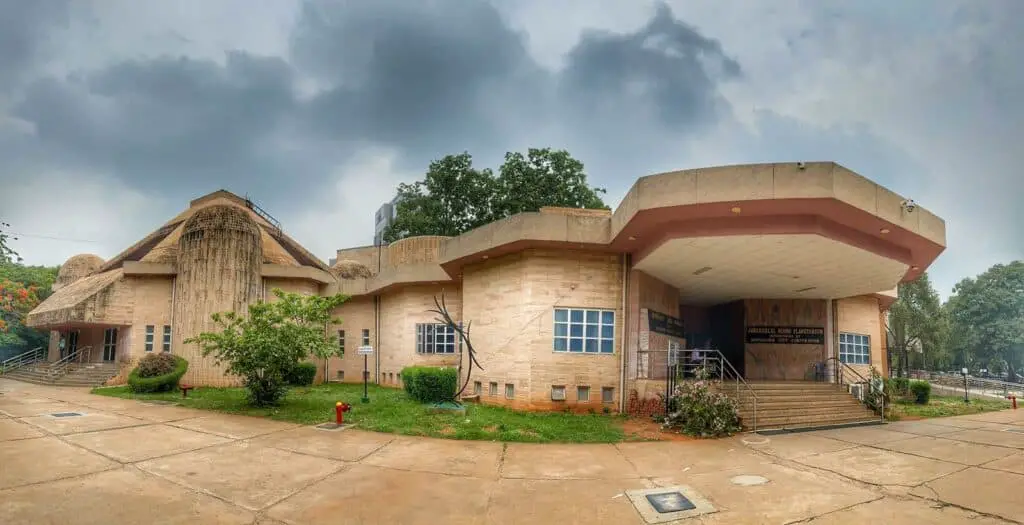
History and Background
The Jawaharlal Nehru Planetarium, nestled in the vibrant city of Bangalore, has a rich history dating back to its inception in 1989. Established by the Bangalore Association for Science Education (BASE), the planetarium was conceived to promote scientific temper and foster a deeper understanding of astronomy among the public, particularly the youth.
Named in honour of Jawaharlal Nehru, the first Prime Minister of India and a staunch advocate of scientific progress and education, the planetarium embodies his vision of harnessing science for the betterment of society. Since its inauguration, the planetarium has steadfastly committed to advancing science education and public engagement.
The foundation stone for the planetarium was laid on 2nd October 1988 by the then Prime Minister of India, Rajiv Gandhi. It was officially inaugurated on 20th May 1989, marking the beginning of a new era in astronomical education in Bangalore. Over the years, the planetarium has undergone several expansions and renovations to enhance its facilities and offerings, ensuring it remains at the forefront of science education and outreach.
Also Read: Visvesvaraya Industrial and Technology Museum
One of the significant milestones in the planetarium’s history was the installation of the Carl Zeiss Starmaster projector in 2004, replacing the earlier opto-mechanical projector. This state-of-the-art projector revolutionised the planetarium experience, allowing for more immersive and realistic night sky presentations.
Throughout its journey, the Jawaharlal Nehru Planetarium has been a beacon of scientific curiosity and exploration, inspiring generations of visitors to look up at the stars and ponder the mysteries of the universe. Its impact extends beyond its physical walls, reaching schools, colleges, and communities across Bangalore and beyond. As it continues to evolve and innovate, the planetarium remains dedicated to its mission of kindling the flame of scientific curiosity in the hearts of all who walk through its doors.
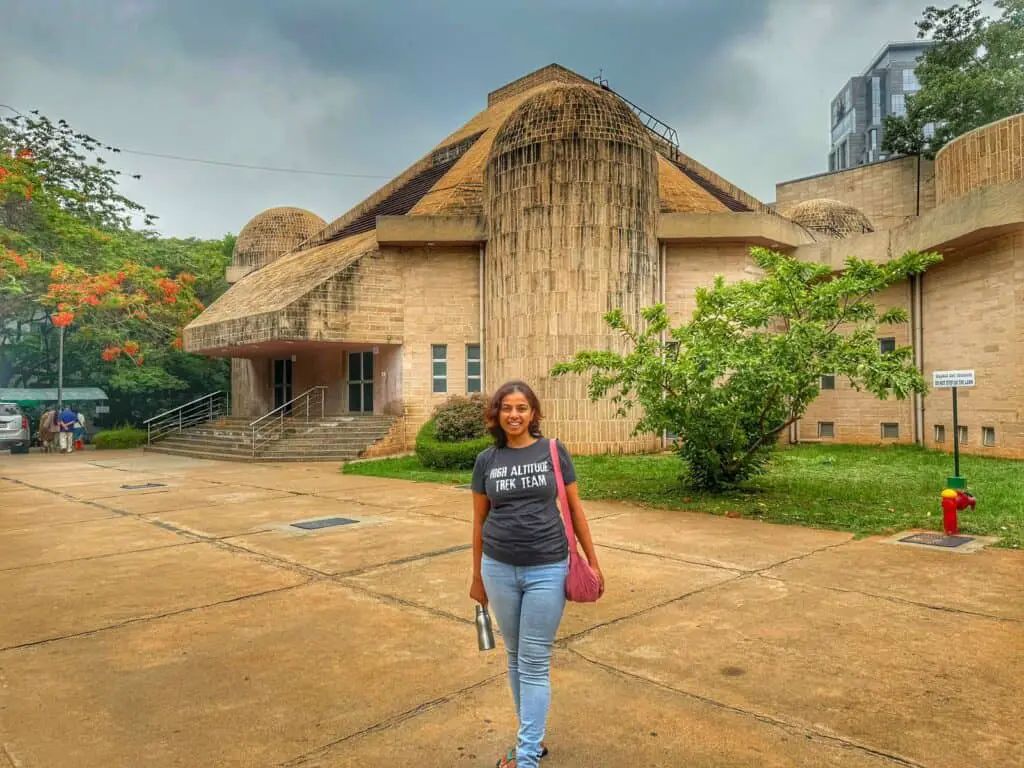
Exhibits and Attractions
The Jawaharlal Nehru Planetarium offers diverse exhibits and attractions catering to visitors of all ages and interests. The planetarium features interactive exhibits and displays exploring various aspects of astronomy and space science. From models of celestial bodies to hands-on demonstrations of scientific principles, these exhibits engage visitors in a fun and educational way.
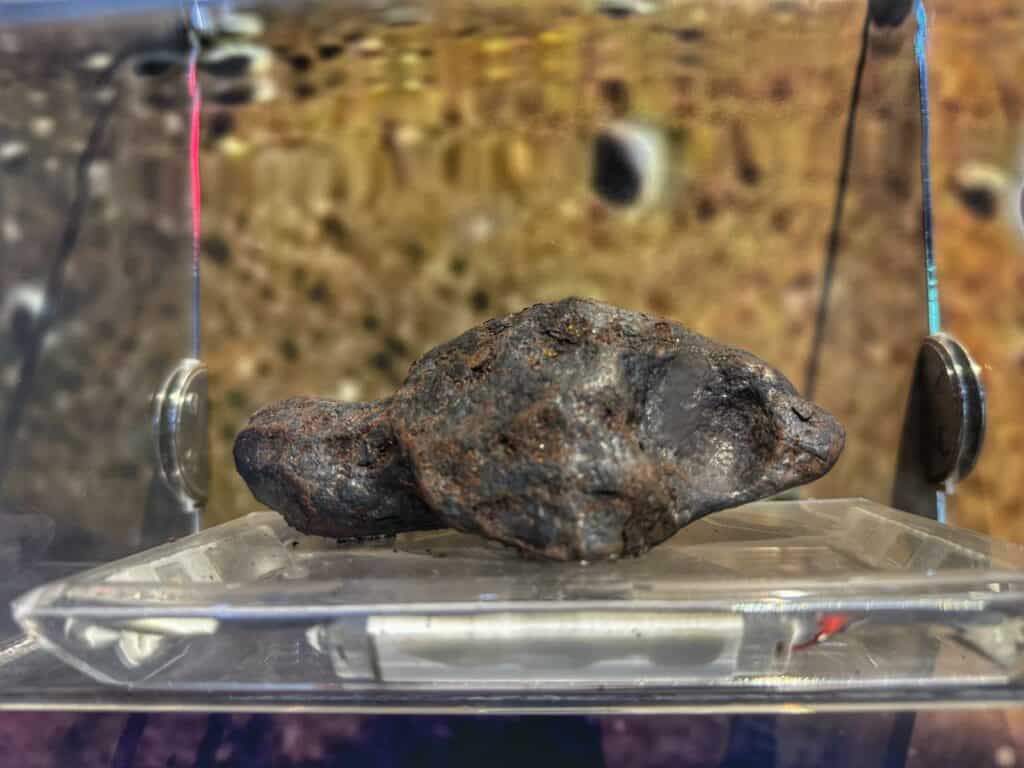
One of its main attractions is the Sky Theatre, a domed theatre with seating for approximately 210 spectators. Here, immersive 40-minute shows project the wonders of the night sky onto the dome, providing a captivating journey through space and time.
Another highlight is the Soyuz T-10 spacecraft exhibit, which showcases the spacecraft that carried India’s first cosmonaut, Rakesh Sharma, to space. Visitors can view Sharma’s space suit and mission journal alongside the spacecraft, offering a tangible connection to India’s space exploration endeavours.
Furthermore, the Science Park surrounding the planetarium provides an outdoor space where visitors can explore interactive exhibits that playfully demonstrate scientific concepts. These exhibits and attractions make the Jawaharlal Nehru Planetarium a must-visit destination for anyone curious about the universe’s wonders.
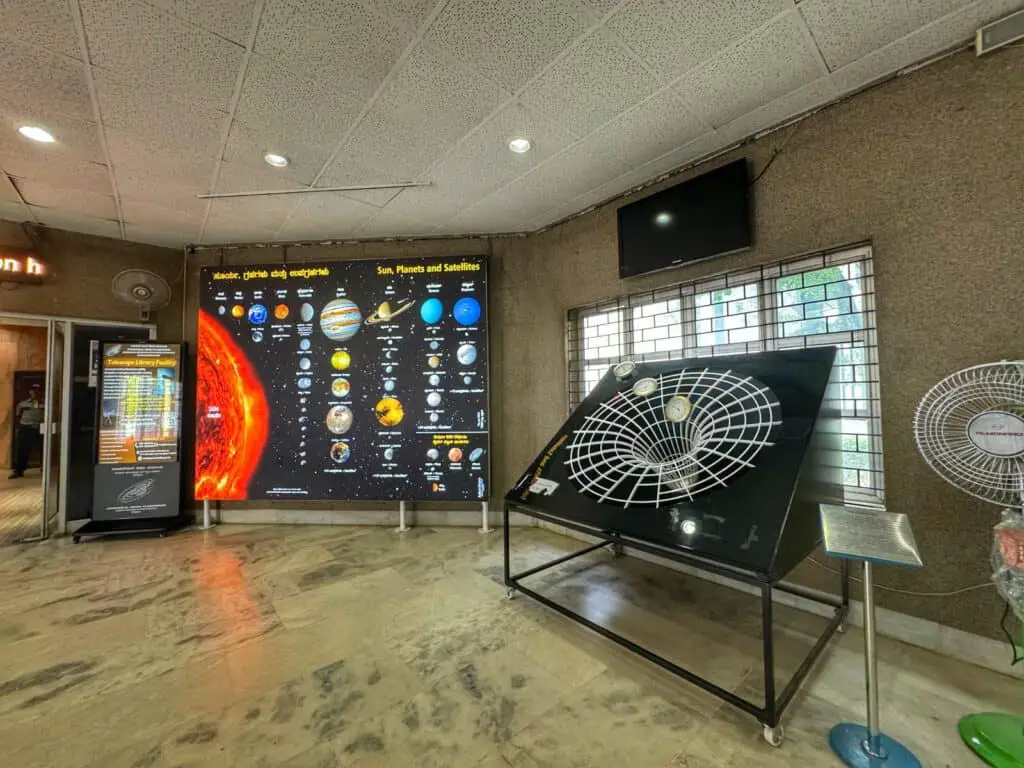
Educational Programs and Workshops
The planetarium features a range of educational programs and workshops designed for students, educators, and astronomy enthusiasts. These programs cover various topics, from fundamental astronomy to advanced space science, providing hands-on learning experiences that complement traditional education.
The planetarium offers tailored educational programs for school groups that align with the school curriculum. These programs cover the solar system, constellations, and space exploration. These programs include interactive presentations, planetarium shows, and guided tours of the exhibits, allowing students to engage with scientific concepts in a dynamic and immersive environment.
In addition to school programs, the planetarium hosts workshops and lectures on a range of topics related to astronomy and space science. These workshops are designed to appeal to beginners and experienced enthusiasts and cover astrophotography, celestial navigation, and cosmology. Led by knowledgeable instructors, they provide valuable insights and practical skills that participants can apply to their astronomical pursuits.
Overall, the educational programs and workshops at the Jawaharlal Nehru Planetarium inspire curiosity and foster a deeper appreciation for the universe’s wonders. Through hands-on learning experiences and engaging presentations, they empower visitors to explore astronomy and space science with confidence and enthusiasm.
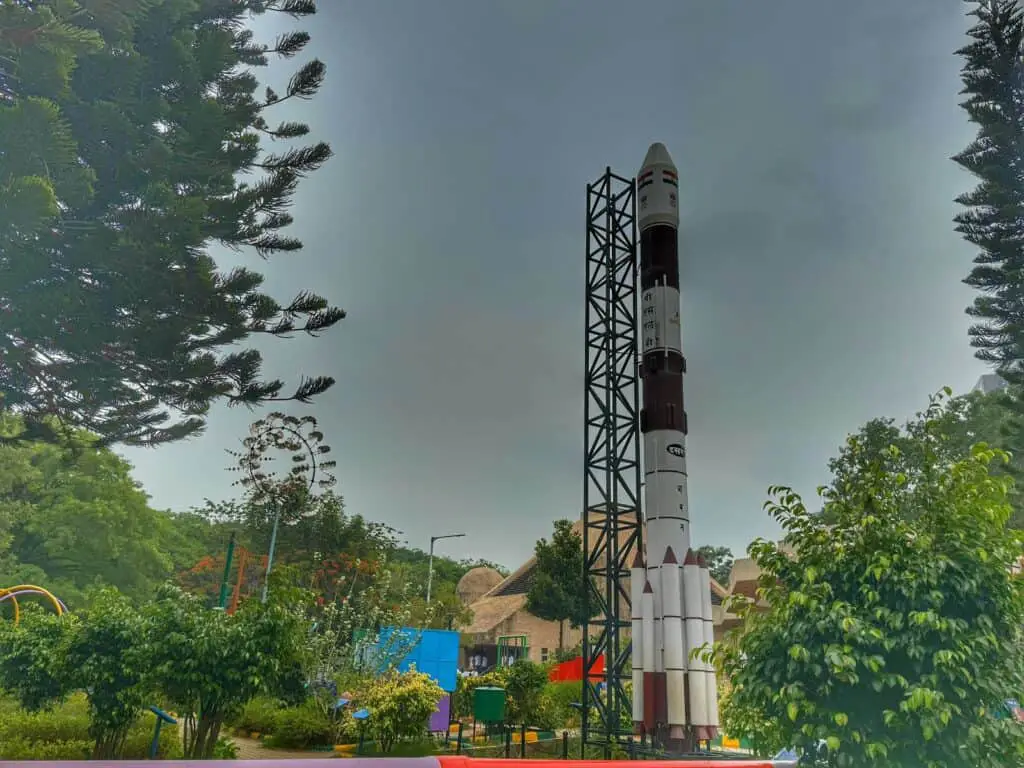
Visitor Information
For visitors planning a trip to the Jawaharlal Nehru Planetarium, it’s essential to note some key information to ensure a smooth and enjoyable experience.
- Entrance Fee: The adult entrance fee for any show in the theatre is INR 75 per person and INR 50 per child. This fee provides access to all the exhibits, attractions, and shows on the planetarium’s premises. The entrance fee is INR 40 per head for an organised group of school students.
- Where to purchase tickets? Tickets can be purchased at the ticketing office near the planetarium’s entrance. However, booking show tickets in advance is advisable, as seating is limited. You can conveniently buy them online through the BookMyShow website.
- Operating Hours: The planetarium is open from 10:00 AM to 5:00 PM, allowing visitors ample time to explore and engage with the various offerings. However, it’s important to remember that the planetarium is closed on Mondays and the second Tuesday of each month.
- Holiday Schedule: Please plan your visit accordingly, considering the planetarium observes holidays on Mondays and the second Tuesday of every month. This closure ensures the staff can maintain and enhance the facilities to provide visitors with the best possible experience.
- Drinking Water: Clean drinking water is readily accessible on the premises. Additionally, the ‘Nandini Stall’ offers a variety of products, including flavoured milk, chocolates, and cookies made by Nandini, the renowned brand of the Karnataka Milk Producers Co-operative Society.
- Accessibility: The Jawaharlal Nehru Planetarium is wheelchair accessible, ensuring that visitors of all abilities can enjoy the exhibits and shows comfortably. Inquire about this at the ticketing office.
- Location: The planetarium is conveniently located in the heart of Bangalore, making it easily accessible by public transportation or private vehicles.
- Souvenir Shop: For those interested in science-related merchandise, the ‘Curious Stall,’ managed by M/s Dynam Creativity, sells many items, such as science books, toys, activity kits, and posters.
By keeping these visitor information details in mind, you can confidently plan your trip to the Jawaharlal Nehru Planetarium, knowing what to expect and how to make the most of your visit.
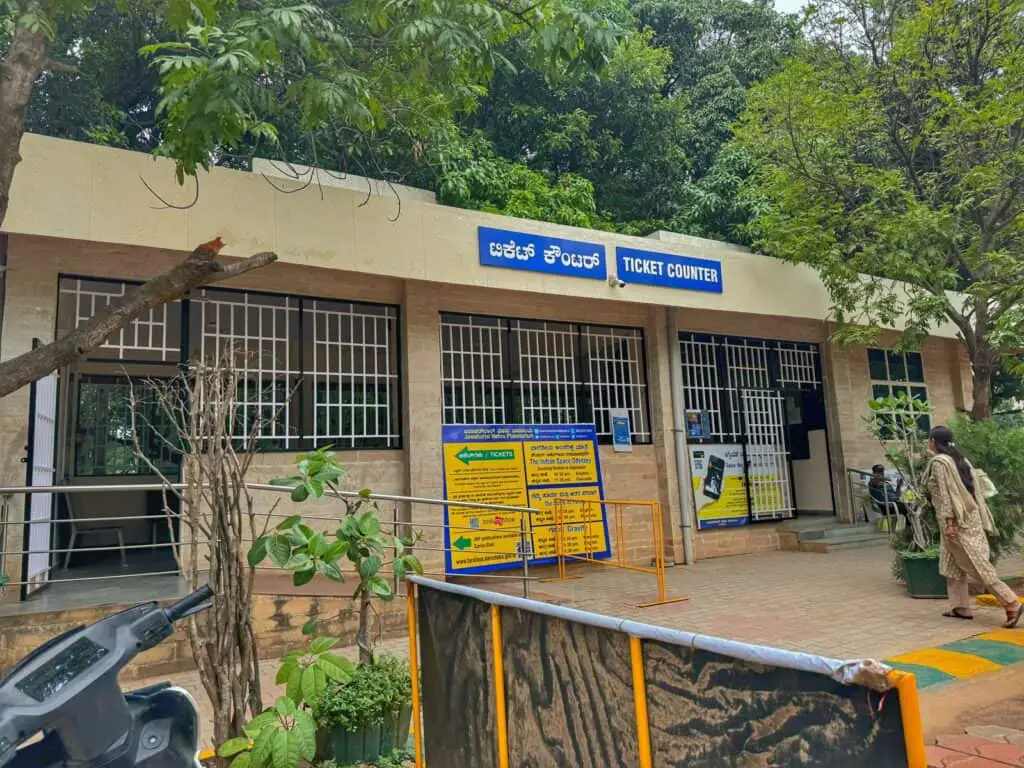
My Visiting Experience
A few weeks ago, I visited the Jawaharlal Nehru Planetarium Bangalore to expand my knowledge about satellites and rockets. The highlight of my visit was a captivating sky show titled “Indian Space Odyssey: Sounding Rockets to Gaganyaan.”
This immersive presentation explored various intriguing themes, including humanity’s enduring fascination with space travel, the progress in realizing this dream, and the current state of human spaceflight worldwide. It offered a comprehensive look into the inception and evolution of the Indian space program, shedding light on its remarkable achievements over the years.
Presented with stunning visuals, the show delved into the intricate process of astronaut training, the awe-inspiring HLVM3 launch vehicle, and the groundbreaking Gaganyaan spacecraft. It meticulously depicted the preparations for the launch. It provided insights into how Indian astronauts will embark on their exhilarating journey to orbit aboard the Gaganyaan spacecraft, ensuring a safe return.
The most captivating aspect of the show was undoubtedly its impressive animations, which brought various elements of the Gaganyaan spacecraft to life on the sky dome. Produced by the esteemed Indian Space Research Organisation (ISRO), this 30-minute spectacle promised to mesmerize audiences with its immersive storytelling and breathtaking visuals.
During our visit, we were fortunate to enjoy the show and have the privilege of meeting and listening to Dr. B. R Guruprasad, the Director of the Planetarium. It was a truly memorable and cherished experience that left a lasting impression on me.
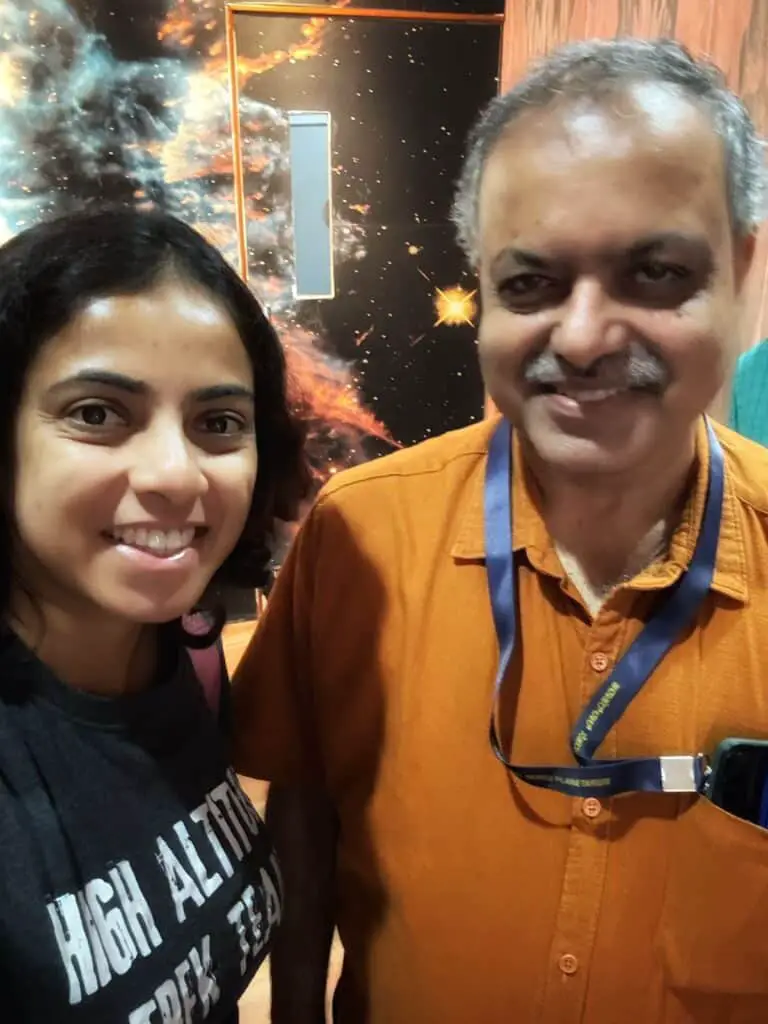
Frequently Asked Questions (FAQ) for Jawaharlal Nehru Planetarium Bangalore
Q: What is special about the Jawaharlal Nehru Planetarium?
One of the major attractions in the Jawaharlal Nehru Planetarium is the Soyuz T-10, which carried India’s first cosmonaut, Rakesh Sharma, to space, along with his space suit and mission journal. The Sky Theatre at the Jawaharlal Nehru Planetarium is also very popular, attracting over 200,000 visitors annually.
Q: How long is the planetarium show in Bangalore?
The show is around 40 to 45 minutes.
Q: Are phones allowed in the planetarium?
Phones are allowed inside the planetarium and theatre. However, please keep them on silent or switch them off to avoid disturbing others.
Q: How many seats are there in the Nehru Planetarium?
The theatre, with seating for approximately 210 recliners, hosts shows projected onto the domed roof, offering a unidirectional view in all directions.
Q: Does Nehru Planetarium have a telescope?
The telescope observatory features a Carl-Zeiss 6” refractor telescope mounted on a Coude mount, allowing for a fixed focus point.
How to Get to Jawaharlal Nehru Planetarium?
By Road
Located in the heart of Bangalore, adjacent to Raj Bhavan, the planetarium enjoys a central city position, making it easily accessible by car. It is approximately 700 meters from the Bangalore General Post Office (GPO) and offers convenient driving access.
Also Read: Namma Bengaluru’s Permanent Pictorial Cancellations (PPC)
Parking facilities are free; however, visitors should note that parking is at their own risk and is available solely during the planetarium’s operating hours.
By Public Transport
Dr. B.R. Ambedkar Metro Station is the nearest metro station to the planetarium, approximately 950 meters away. You can easily walk to the planetarium as it is a flat walk.
Closing Notes
The Jawaharlal Nehru Planetarium is a place for scientific exploration and education in the heart of Bangalore. Its immersive sky theatre shows, captivating exhibits and educational programs offer visitors of all ages a unique opportunity to delve into the universe’s wonders.
From tracing the evolution of the Indian space program to experiencing the thrill of space travel through visually stunning presentations, the planetarium provides a memorable and enriching experience for all who visit. The planetarium’s offerings cater to diverse interests and knowledge levels.
As you step into the world of stars, galaxies, and beyond, you’ll be greeted with a sense of wonder and awe that transcends boundaries and inspires a deeper appreciation for the mysteries of the universe. With its commitment to fostering scientific curiosity and understanding, the Jawaharlal Nehru Planetarium continues to ignite the imaginations of countless visitors, leaving a lasting impression that echoes long after the visit has ended.
How Can You Support Me?
You know I love coffee, so you can buy me a coffee – Buy Me Coffee!
If you enjoyed and liked this article, comment, tweet, and share this post.
Do you have a question or a suggestion? Or want to know more information? Write to me at bengaluruprayana@gmail.com.
Subscribe to My Newsletter
PIN for later reference – Jawaharlal Nehru Planetarium Bangalore

